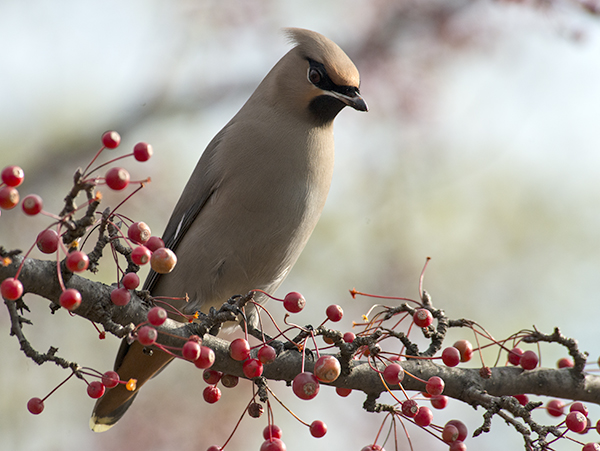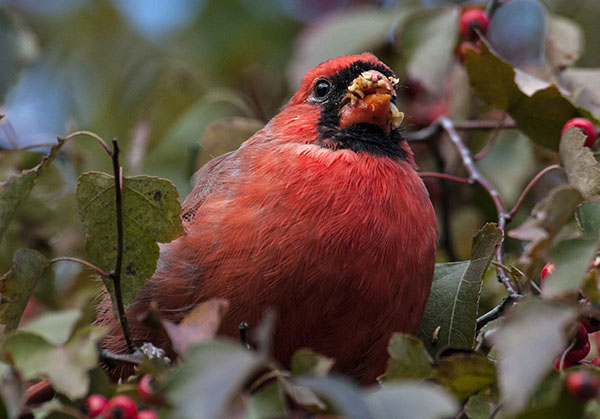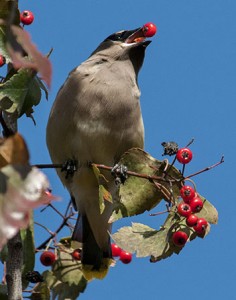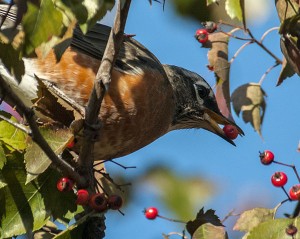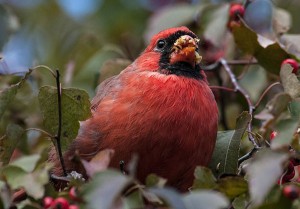For those birders who keep lists, a Lifer bird is one that you see in the wild for the first time in your life. Always exhilarating, often amazing, and really pretty cool when you think about it.
I love birds. I know a bit about the local ones, and I know enough birders to know when a rare bird is around. Thankfully birders like to share info—a nice trait.
I had heard through the grapevine that a Bohemian waxwing had been seen at the Chicago Botanic Garden for the last two days. This is a bird that spends most of its time in the boreal forests of Canada, and only very rarely visits Illinois in the winter. Similar to the cedar waxwing, which can be found here year round, it is larger, lacks the yellow on the belly, and has lovely reddish markings on the face and under the tail.
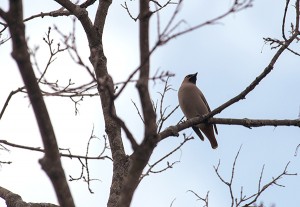
Birds don’t sit still, and this particular bird had been seen in several different locations at the Garden. No telling where it would be today, or even if I would see it.
Luckily, when I headed toward its last known location near the Enabling Garden, I came upon several birders. They were pointing to the top of a tree. I look up. Yep, there’s a bird about 20 feet up, backlit against a white sky. Hmmm, not the view I was hoping for. But I can just make out the identifying marks of a Bohemian waxwing. Ok, there it is, my Lifer. Hmmm, kinda anticlimactic. In case this is the one and only time I ever see this species, I take a few obligatory shots. I personally don’t count a bird on my list unless I have a photo, and now I have a few. They aren’t going to win any awards, but that’s the way it goes sometimes.
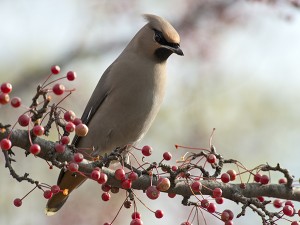
Just after I get my shot, the bird flies to another clump of trees a short distance away. Then it flies out of sight. A few birders go off to see if they can relocate it. I chat with the others who have stayed behind. Some had seen the bird before today. But for many, this is a Lifer for them too.
While waiting for the bird to hopefully make another appearance, I take a moment to photograph the many cedar waxwings that are enjoying the abundant berries nearby. Suddenly I hear shouts from the birders. The Bohemian waxwing has just flown into the trees where the cedar waxwings are feeding, not far from where I’m standing. The bird is a few trees back and blocked by branches. I don’t want to move and scare it off, risking the wrath of the birders, so I just wait. Soon the Bohemian waxwing makes its way toward me. Wow! It’s hopping onto branches, closer and closer to where I’m standing. Oh my! Now it’s right in front of me. Whooo, hoooo! I couldn’t have gotten any closer if I had tried. Click, click, click, wow, wow, wow, amazing! I’m stunned. What an incredible encounter. This is one Lifer experience I’ll never forget. And…I have the photos to prove it!
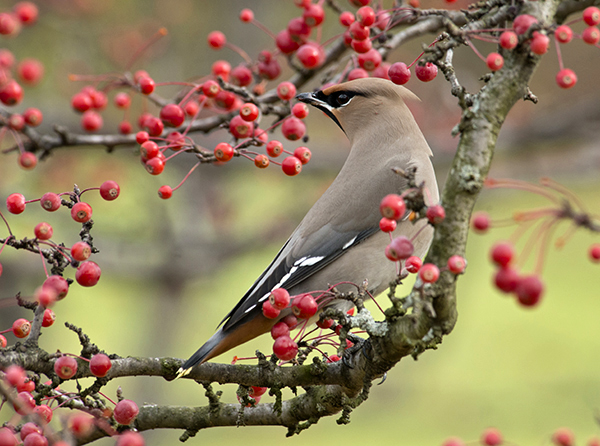
©2012 Chicago Botanic Garden and my.chicagobotanic.org

